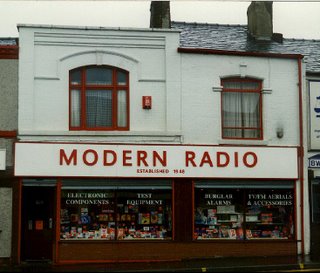
This was a classic project! Back in 1969 there were very few Radio Amateurs transmitting on VHF (2 metres) along came this project in Practical Wireless which used a previously unknown device called an FET (Field Effect Transistor) these devices could work at very high frequencies (VHF) so I decided to have a go at this one!
After spending all my pocket money on a 2N3819 FET, the CQ2 began to take shape. I mounted the receiver on an aluminum front panel which was originally built to house an oscilloscope that I began to build when I was at school. (not a good idea!!) The metal chassis caused havoc with the tuned cicuit, so I rebuilt it on a piece of plywood! When the receiver was built I made a QUAD ANTENNA for 2m. The receiver was tuned by squeezing or lengthening the coil and fine tuning with the variable capacitor. Very tricky, as the receiver was a super-regen it was inclined to 'take-off' and blot out everyones television for miles around!
Here is the circuit...

The first results was listening to the gas board from their PMR transeivers, but after hours of twiddling I finally heard Chris Hartley from Bolton who worked 2m! Chris had a huge antenna system located in Bromley Cross and ran high power on 2m!
My very first attempt at VHF communications!
Why have I posted this...because my Grand Daughter, Melissa who is two years old decided to tear off the front cover of the original magazine (35 years old!!) After a big sort out with some magazines in my room. CQ2 Melissa!












